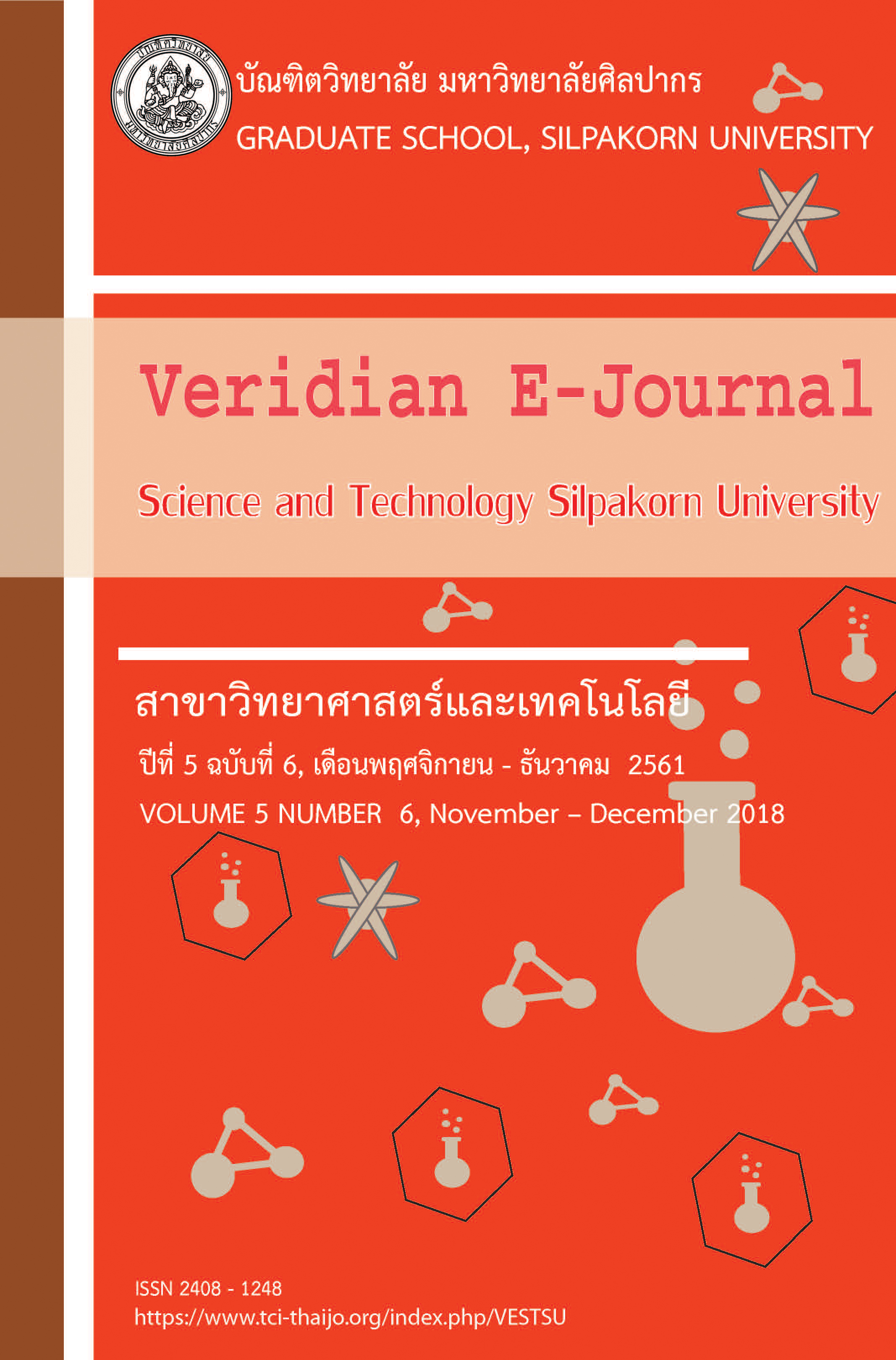แบบจำลองประสิทธิภาพแสงสว่างรวมบนระนาบในแนวดิ่งในสภาพท้องฟ้าทั่วไป (Global luminous efficacy models on vertical surfaces for general sky)
Main Article Content
Abstract
บทความนี้นำเสนอการพัฒนาแบบจำลองประสิทธิภาพแสงสว่างรวมบนระนาบในแนวดิ่งในสภาพท้องฟ้าทั่วไปรายชั่วโมง ซึ่งแบบจำลองดังกล่าวแสดงความสัมพันธ์ระหว่างค่าประสิทธิภาพแสงสว่างรวมบนระนาบในแนวดิ่ง กับค่าโคซายน์ของมุมเซนิธของดวงอาทิตย์ ปริมาณโอโซน ค่าความลึกเชิงแสงของฝุ่นละออง ปริมาณไอน้ำในบรรยากาศ และดัชนีเมฆ โดยข้อมูลที่ใช้ในการสร้างแบบจำลองดังกล่าวได้จากสถานีอุบลราชธานี (15.25 oN, 104.87 oE) และนครปฐม (13.82 oN, 100.04 oE) ในปี ค.ศ. 2013-2014 จากนั้นทำการทดสอบสมรรถนะของแบบจำลองที่สร้างขึ้นโดยใช้ข้อมูลที่ได้จากสถานีวัดดังกล่าวในปี ค.ศ. 2015 ผลที่ได้พบว่าค่าแสงสว่างรวมบนระนาบในแนวดิ่งที่ได้จากการคำนวณจากแบบจำลองมีความสอดคล้องกับค่าที่ได้จากการวัดค่อนข้างดี โดยมีความแตกต่างในรูปของรากที่สองของค่าเฉลี่ยความแตกต่างยกกำลังสอง เท่ากับ 13.79% สำหรับสถานีอุบลราชธานี และ 15.46% สำหรับสถานีนครปฐม
This article presents the global luminous efficacy of solar radiation incident on vertical surfaces (North, South, East and West) for general sky condition. The models relate global luminous efficacy of solar radiation on vertical surfaces with cosine of solar zenith angle, total ozone column, aerosol optical depth, precipitable water and cloud index. Data used for formulating the model was obtained from solar monitoring station located at Ubon Ratchathani (15.25 oN, 104.87 oE) and Nakhon Pathom (13.82 oN, 100.04 oE) for the period of 2013-2014. To investigate the model performance, the model was used to calculate global illuminance on vertical surfaces at the stations for the year 2015. It was found that the values of global illuminance on vertical surfaces calculated from the models and those obtained from measurements were in reasonable agreement with the root mean square difference (RMSD) of 13.79% for Ubon Ratchathani and 15.46% for Nakhon Pathom.

